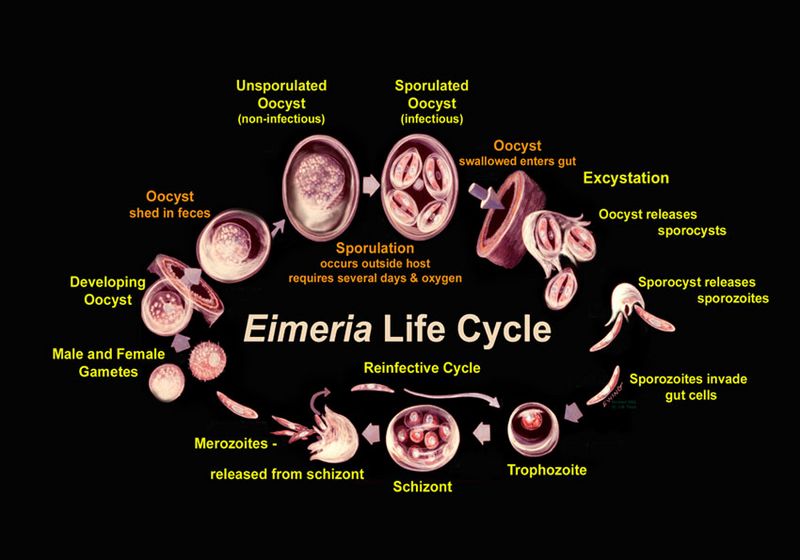Archivo: Eimeria life cycle usda

Descripción: Eimeria Life Cycle Eimeria have a complex life cycle that begins after oocysts that are in the litter are ingested by chickens. The grinding action of the gizzard coupled to the enzymes in the gut of chickens leads to release of the sporozoite stage. The sporozoites search out particular regions of the gut and invade the epithelial cells lining the intestine. This invasion may occur within 1 to 6 hours after the oocysts are ingested. After invasion, the sporozoites undergo replication, which leads to a rapid increase in another stage of the parasite called merozoites. This developmental stage breaks out of the gut cells and invades more cells of the gut, multiplying once again. The effects of coccidiosis are generally associated with the lysing of host epithelial cells by merozoites. As many as four generations of merozoites may develop in the gut during an infection. The number of generations is dependent on the particular species of Eimeria. Some, as yet unidentified, signal tells the merozoites to develop into the sexual stages called micro- (male) and macro-(female) gametocytes. These develop into micro- and macrogametes which fuse to form a zygote. The zygote develops into an oocyst stage that are eventually released in the feces. These oocysts are covered by a hard shell, but first must undergo further development (sporulation) in litter to become infectious for chickens. The whole process between oocyst ingestion and release may take between 4-6 days to complete.
Título: Eimeria life cycle usda
Créditos: USDA ARS, [1]
Autor(a): USDA
Términos de Uso: Dominio Público
Licencia: Dominio Público
¿Se exige la atribución?: No
Usos del archivo
La siguiente página enlaza a este archivo:

